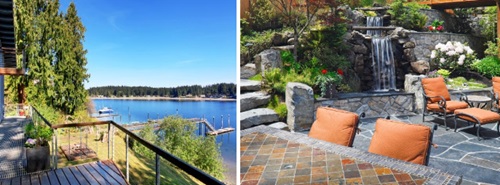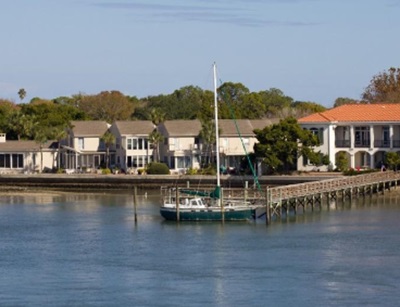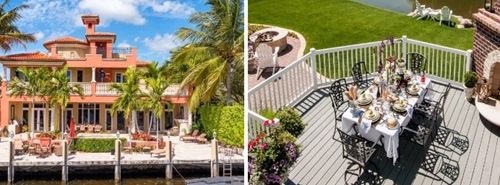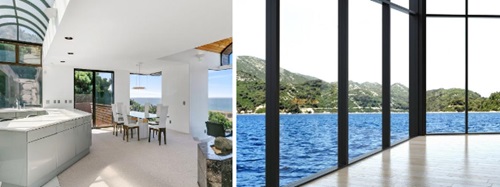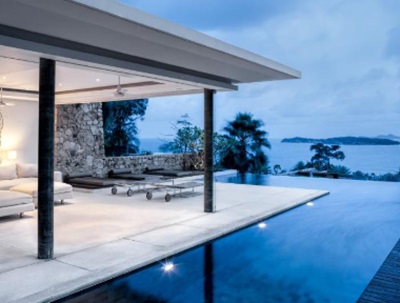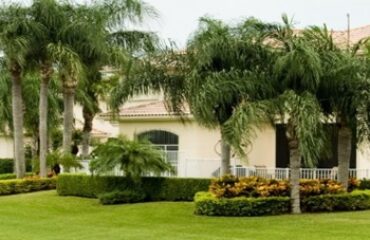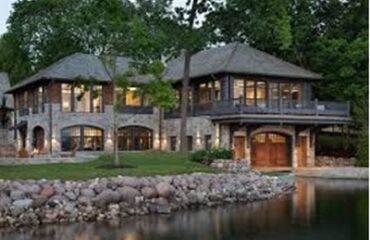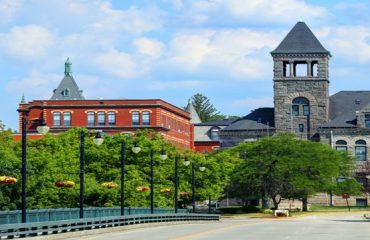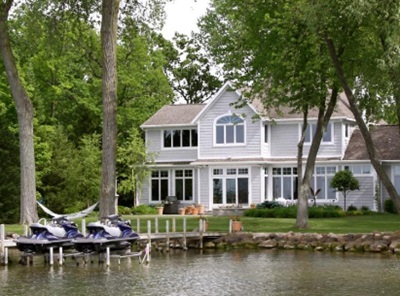
Designing a home near a river can be a wonderful idea, offering a serene and picturesque setting. However, it’s essential to consider several factors to ensure safety, sustainability, and enjoyment of your riverside dwelling.
Regulations and Permits:
Before purchasing land or starting construction, familiarize yourself with local regulations regarding building near water bodies. There may be restrictions to protect the river’s ecosystem and prevent flooding. You want to ensure compliance with local building codes, zoning regulations, and environmental permits. Restoration by minimizing your home’s environmental impact by using sustainable building materials and practices and consider incorporating green features such as solar panels, rainwater harvesting systems, and native landscaping Safety should include easy access to your property by constructing a sturdy driveway and pathways, and install proper lighting, especially if the area is secluded. Erosion control will protect the riverbank and prevent soil erosion. This may include planting native vegetation, installing retaining walls, or using erosion-control blankets. Begin by thoroughly assessing the site to understand its features, including the slope of the land, proximity to the water, vegetation, and any potential risks such as flooding or erosion.
Flood Risk Assessment:
You will want to conduct a thorough flood risk assessment to understand the potential dangers and take appropriate precautions. Elevate the main living areas above flood levels and consider flood-resistant materials for construction. Develop an emergency plan in case of natural disasters such as floods or storms. Familiarize yourself with evacuation routes and assemble an emergency kit containing essential supplies. Consider materials like concrete, steel, and treated wood for the foundation and structural elements. Utilize waterproofing techniques and elevation strategies to safeguard against water damage.
Orientation and Views
Position your home to maximize views of the river and surrounding landscape. Large windows, balconies, or a riverside deck can enhance your connection with nature. Incorporate natural elements into your design to seamlessly blend with the surroundings. Use landscaping to enhance biodiversity and create a buffer zone between your home and the riverbank. Steeping stones, concrete steps to step into the river is a nice addition. Strategically plan your home’s layout to provide privacy while still enjoying the river views. Utilize landscaping, fencing, and architectural features to create secluded outdoor spaces and ensure security.
Designing a Home by the riverfront
Designing a home near a river you want to choose a style that complements the natural surroundings, such as a modern, rustic, or cottage-style home and use natural, earthy tones to blend with the environment. You can use several popular styles to construct waterfront homes with the best views, maximizing the beauty of the surrounding water and creating a seamless connection between indoor and outdoor spaces. Plan your living spaces, such as the living room, dining area, and master bedroom, to face the river and have river views Maximize your water views with large windows, sliding glass doors, and outdoor living spaces like decks or patios can help you connect with nature and provides stunning panoramic views.
Open floor plans are popular construction styles that maximize views. Use colors that reflect the river and its surroundings. Soft blues, grays, and greens can mimic the water, sky, and foliage. These colors can help create a serene and calming atmosphere Incorporate materials that resonate with the riverside setting. Hardwood floors, stone countertops, and glass windows that provide expansive views of the river. Natural light not only enhances the home’s overall aesthetics but reduces the need for artificial lighting during the day, which can optimize energy savings. Decorate with artwork that complements the river environment. This might include landscape paintings, river scenes, or abstract artwork that uses textures and colors reflective of the natural setting. The waterfront’s true beauty with homes prioritizing stunning outdoor spaces and waterfront landscaping. One-way popular construction styles achieve this is by incorporating large decks and patios. Large sofas, outdoor fireplaces or pits, outdoor kitchen and glass doors enhance the outdoor living. A wall of windows serves as a gateway to the outdoors, blurring the boundaries between indoor and outdoor living spaces.
Recreation and Entertainment
Take advantage of the riverfront location for recreational activities such as fishing, boating, or simply relaxing by the water. Consider incorporating outdoor amenities like a fire pit or barbecue area for entertaining guests. Engage with the local community and environmental organizations to learn about ongoing conservation efforts and opportunities for involvement Design outdoor living areas that take advantage of the riverfront location. Consider amenities such as a waterfront deck, patio, or even a private dock for water access and recreational activities like boating or fishing.
By carefully considering these aspects and collaborating with experienced architects, engineers, and landscape designers, you can create a stunning and sustainable home that celebrates the beauty of riverfront living while respecting the natural environment.


